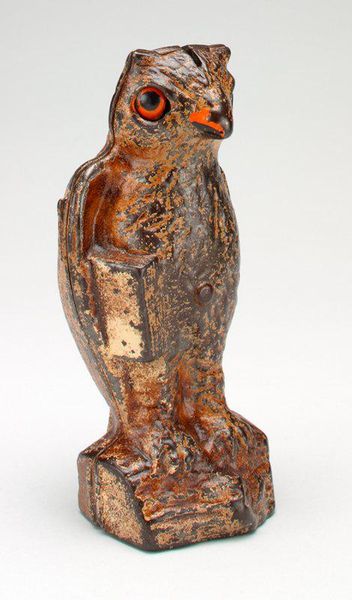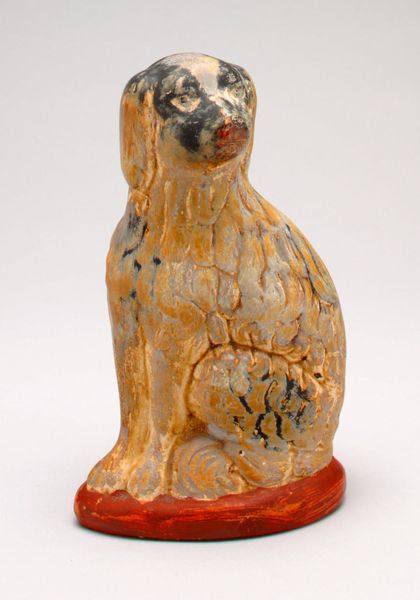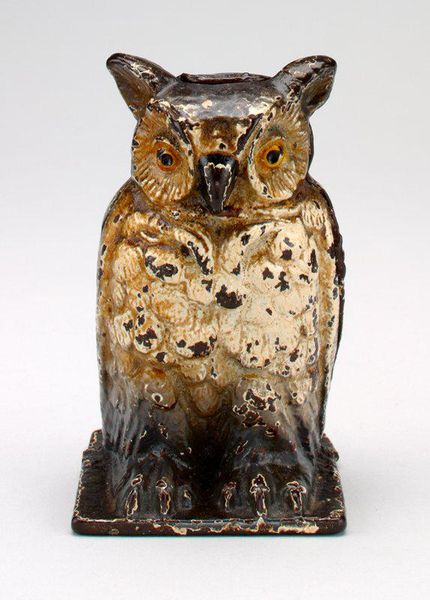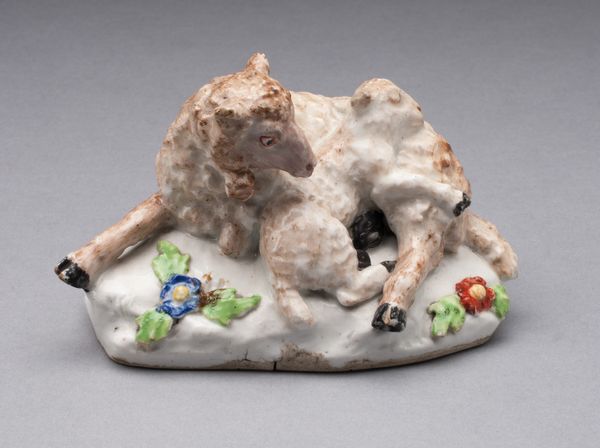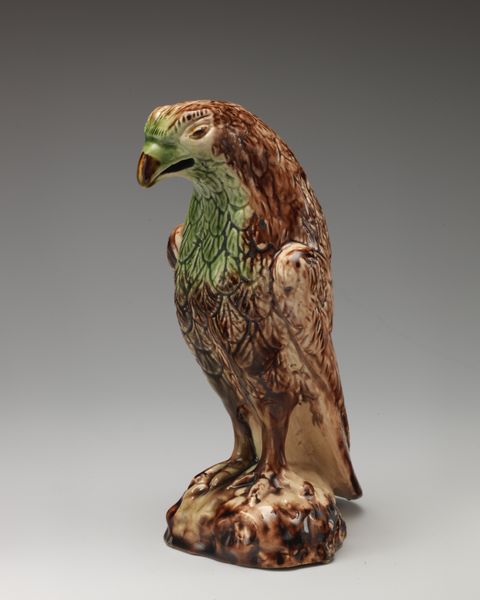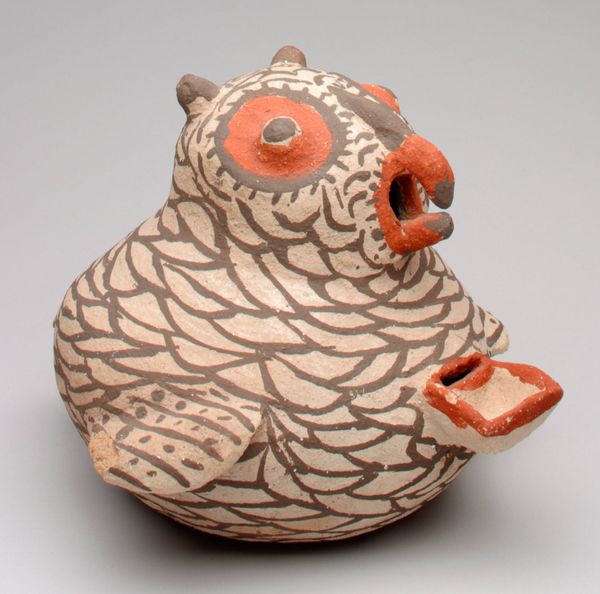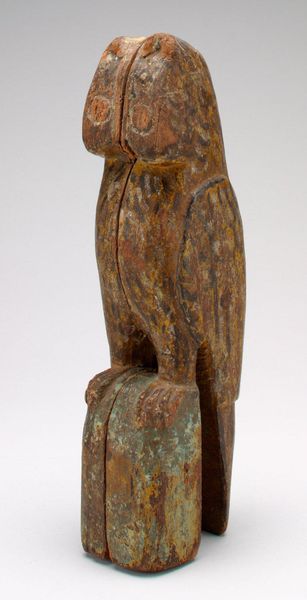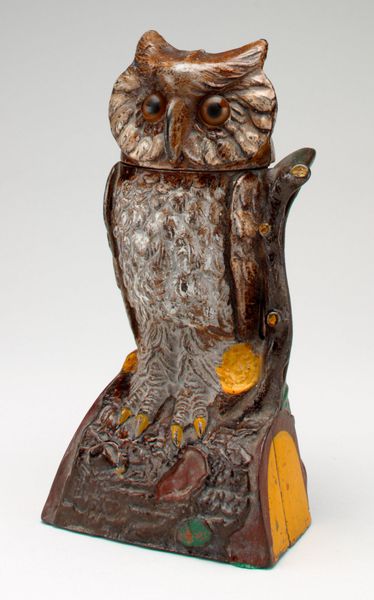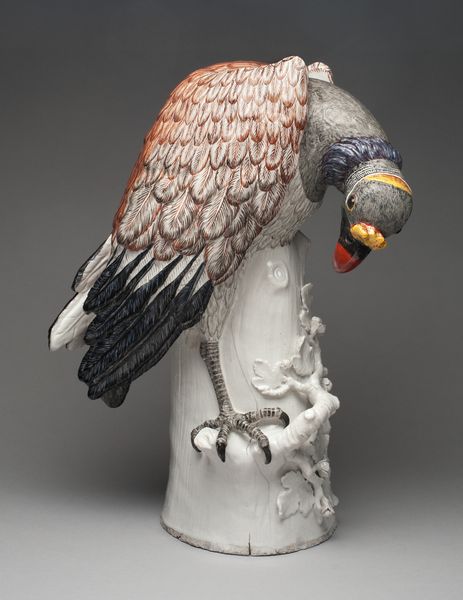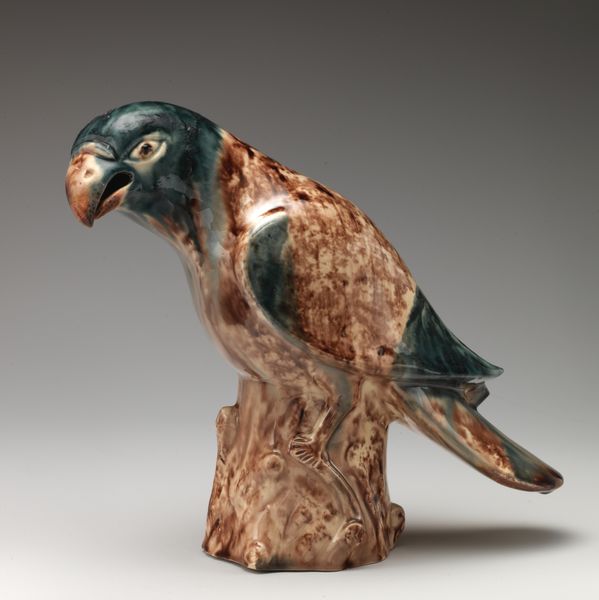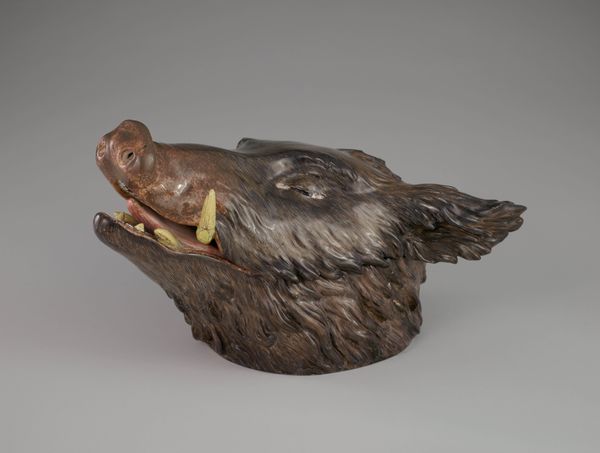
carving, assemblage, sculpture, plaster
#
carving
#
animal
#
assemblage
#
figuration
#
sculpture
#
plaster
#
realism
Dimensions: 4 3/4 x 3 5/8 x 2 5/8 in. (12.07 x 9.21 x 6.67 cm)
Copyright: Public Domain
Curator: Let's turn our attention to this striking plaster sculpture titled "Eagle still bank," dating from the late 19th to early 20th century. Editor: It's surprisingly visceral, almost crude in its construction. The worn plaster, dabbed with faded red paint... there's a real sense of aged, almost crumbling authority. Curator: The materials certainly speak to its function and the values of the time. This object blends popular craft with notions of national pride, rendered in easily accessible, if not particularly durable, materials. Plaster allowed for relatively inexpensive production, suggesting a wide target audience. We should remember this was designed to hold and encourage the accumulation of money, a truly material concern! Editor: Yes, and the eagle is so powerfully symbolic. It's a national emblem, obviously, connoting freedom, power, vigilance, even divine authority. The stiff, frontal pose reinforces this sense of unwavering resolve, like an icon frozen in time. Think of how often eagles appear on coinage, government seals. To see it literally become a container for money…it's fascinating. Curator: Indeed. Its status as both sculpture and utilitarian object raises questions about value. Is it art or commodity? Does its symbolic value amplify its monetary worth? How do changing economies impact perceptions of national symbols rendered as cheap "folk art"? Editor: The way the red paint is applied, especially around the beak, almost suggests a kind of raw, elemental energy – a barely contained aggression perhaps. And yet, it is, in its way, quite humble. Mass-produced, definitely, yet each example possesses its unique imperfections and quirks, adding a layer of individual character despite the initial intent. Curator: The form also tells us about production capabilities; consider carving and assemblage processes involved in making and mass-producing sculpture in those times, challenging conventional hierarchy that valued bronze and marble over plaster work. It opens conversations on consumerism, industrial manufacturing, and the representation of American values. Editor: Looking at the sculpture now, knowing it’s meant to hold coins, changes my perception entirely. That icon of soaring independence reduced to safeguarding pennies. It speaks to the democratization, and even the potential trivialization, of powerful symbols. Curator: Ultimately, considering its composition, means of manufacture, and placement within culture gives new dimension to its history and legacy. Editor: Yes, I am leaving with an appreciation of how symbols of nation and power can become incredibly personal and tactile objects within the context of daily life.
Comments
No comments
Be the first to comment and join the conversation on the ultimate creative platform.
